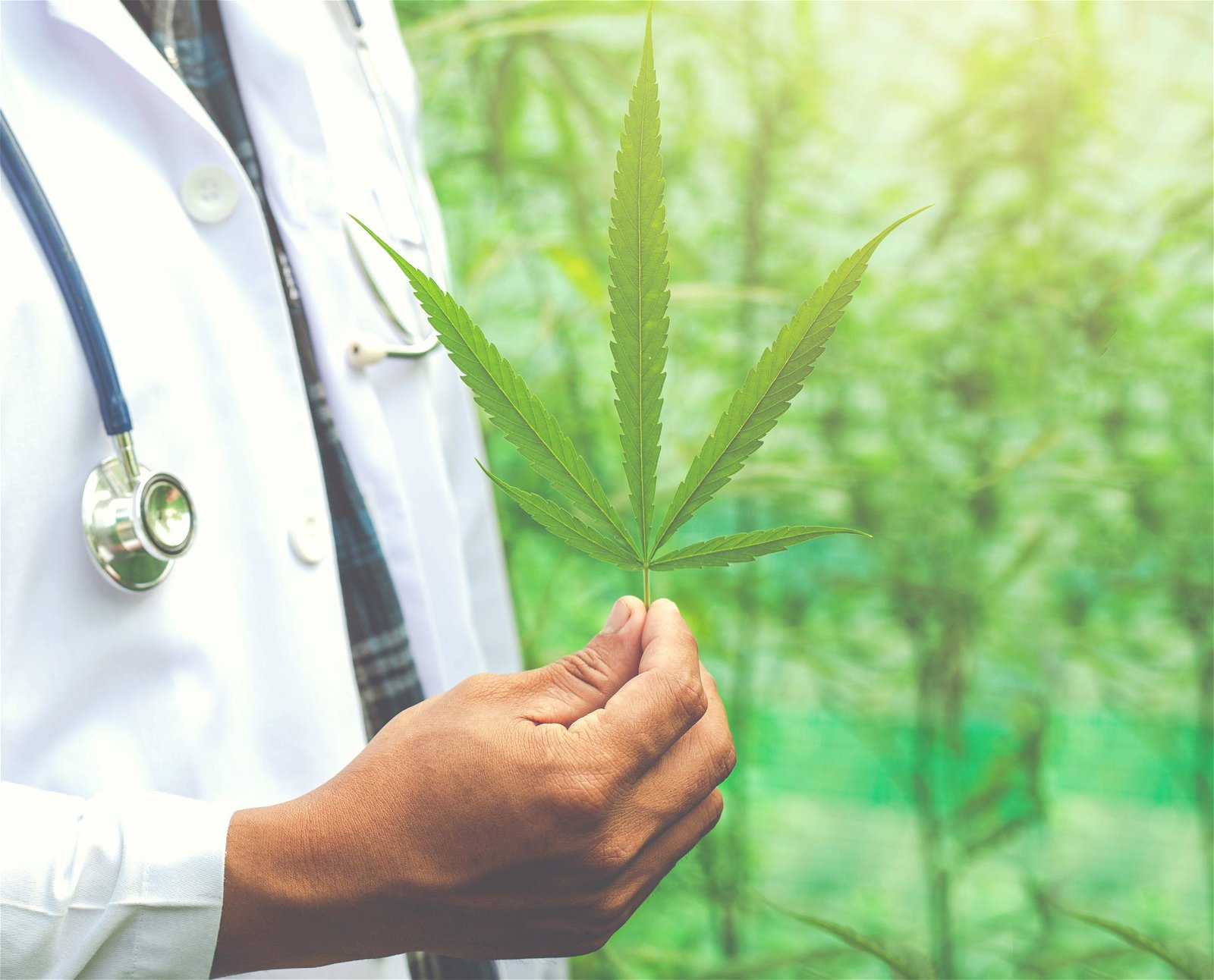CBD, short for cannabidiol, is an active compound found in the cannabis plant. CBD is not intoxicating but may cause some drowsiness. The CBD in most products is extracted from hemp, a variety of cannabis that has only traces (up to 0.3%) of THC, the active compound that gets people high.
If you have chronic arthritis pain, you may be wondering about cannabidiol (CBD) as a treatment. CBD, along with delta-9-tetrahydrocannabinol (THC) and other chemicals, is found in marijuana. But unlike THC, CBD is not “psychoactive” — that is, it does not cause the intoxication or high associated with marijuana use.
There’s a good chance you’ve tried it already: according to a Gallup poll in August of 2019, about 14% of Americans report using CBD products, and the number one reason is pain. The Arthritis Foundation conducted its own poll and found that 29% reported current use of CBD (mostly in liquid or topical form), and nearly 80% of respondents were either using it, had used it in the past, or were considering it. Of those using it, most reported improvement in physical function, sleep, and well-being; of note, a minority reported improvement in pain or stiffness.
Perhaps you’ve been tempted to try it. After all, most types of arthritis are not cured by other treatments, and CBD is considered a less addictive option than opiates.
In a Research named “Cannabidiol: A Brief Review of Its Therapeutic and Pharmacologic Efficacy in the Management of Joint Disease” made by Charles A Gusho and Tannor Court found out that Cannabis has gained widespread popularity following the legalization of its recreational use in several states. CBD, a major non-neurotropic marijuana constituent that is also commercially available, has shown promise in mouse model studies by attenuating pro-inflammatory immune responses.
Additionally, recent research has demonstrated the efficacy of CBD in decreasing the endogenous pain response in mice subjected to acute arthritic conditions, as well as improved fracture healing via collagen cross-linking in a murine mid-femoral fracture cohort. However, there is a lack of high-quality, novel research investigating the use of CBD in human musculoskeletal diseases aside from anecdotal accounts. This review highlights the extent of the current research on CBD and its biochemical and pharmacologic efficacy in the treatment of joint disease, as well as the current evidence surrounding cannabis-based medicine and orthopedic joint replacement. However, given the increased social relevance of CBD and cannabis-based medicines, future, prospective controlled studies evaluating their efficacy are needed.
In another research named “Transdermal cannabidiol reduces inflammation and pain-related behaviours in a rat model of arthritis” made by D.C. Hammell, L.P. Zhang, F. Ma, S.M. Abshire, S.L. McIlwrath, A.L. Stinchcomb, and K.N. Westlund showed that measurement of plasma CBD concentration provided by transdermal absorption revealed linearity with 0.6–6.2 mg/day doses. Transdermal CBD gel significantly reduced joint swelling, limb posture scores as a rating of spontaneous pain, immune cell infiltration and thickening of the synovial membrane in a dose-dependent manner. PWL recovered to near baseline level. Immunohistochemical analysis of spinal cord (CGRP, OX42) and dorsal root ganglia (TNFα) revealed dose-dependent reductions of pro-inflammatory biomarkers. Results showed 6.2 and 62 mg/day were effective doses. Exploratory behaviour was not altered by CBD indicating limited effect on higher brain function.
Concluding that these data indicate that topical CBD application has therapeutic potential for relief of arthritis pain-related behaviours and inflammation without evident side-effects.
If you want to know more you can visit the official Arthritis Foundation Website that has released the ffirst CBD Guidance for Adults with Arthritis at this link.
CBD, short for cannabidiol, is an active compound found in the cannabis plant. CBD is not intoxicating but may cause some drowsiness. The CBD in most products is extracted from hemp, a variety of cannabis that has only traces (up to 0.3%) of THC, the active compound that gets people high.
If you have chronic arthritis pain, you may be wondering about cannabidiol (CBD) as a treatment. CBD, along with delta-9-tetrahydrocannabinol (THC) and other chemicals, is found in marijuana. But unlike THC, CBD is not “psychoactive” — that is, it does not cause the intoxication or high associated with marijuana use.
There’s a good chance you’ve tried it already: according to a Gallup poll in August of 2019, about 14% of Americans report using CBD products, and the number one reason is pain. The Arthritis Foundation conducted its own poll and found that 29% reported current use of CBD (mostly in liquid or topical form), and nearly 80% of respondents were either using it, had used it in the past, or were considering it. Of those using it, most reported improvement in physical function, sleep, and well-being; of note, a minority reported improvement in pain or stiffness.
Perhaps you’ve been tempted to try it. After all, most types of arthritis are not cured by other treatments, and CBD is considered a less addictive option than opiates.

In a Research named “Cannabidiol: A Brief Review of Its Therapeutic and Pharmacologic Efficacy in the Management of Joint Disease” made by Charles A Gusho and Tannor Court found out that Cannabis has gained widespread popularity following the legalization of its recreational use in several states. CBD, a major non-neurotropic marijuana constituent that is also commercially available, has shown promise in mouse model studies by attenuating pro-inflammatory immune responses.
Additionally, recent research has demonstrated the efficacy of CBD in decreasing the endogenous pain response in mice subjected to acute arthritic conditions, as well as improved fracture healing via collagen cross-linking in a murine mid-femoral fracture cohort. However, there is a lack of high-quality, novel research investigating the use of CBD in human musculoskeletal diseases aside from anecdotal accounts. This review highlights the extent of the current research on CBD and its biochemical and pharmacologic efficacy in the treatment of joint disease, as well as the current evidence surrounding cannabis-based medicine and orthopedic joint replacement. However, given the increased social relevance of CBD and cannabis-based medicines, future, prospective controlled studies evaluating their efficacy are needed

In another research named “Transdermal cannabidiol reduces inflammation and pain-related behaviours in a rat model of arthritis” made by D.C. Hammell, L.P. Zhang, F. Ma, S.M. Abshire, S.L. McIlwrath, A.L. Stinchcomb and K.N. Westlund showed that measurement of plasma CBD concentration provided by transdermal absorption revealed linearity with 0.6–6.2 mg/day doses. Transdermal CBD gel significantly reduced joint swelling, limb posture scores as a rating of spontaneous pain, immune cell infiltration and thickening of the synovial membrane in a dose-dependent manner.
PWL recovered to near baseline level. Immunohistochemical analysis of spinal cord (CGRP, OX42) and dorsal root ganglia (TNFα) revealed dose-dependent reductions of pro-inflammatory biomarkers. Results showed 6.2 and 62 mg/day were effective doses. Exploratory behaviour was not altered by CBD indicating limited effect on higher brain function.
Concluding that these data indicate that topical CBD application has therapeutic potential for relief of arthritis pain-related behaviours and inflammation without evident side-effects.
If you want to know more you can visit the official Arthritis Foundation Website that has released the ffirst CBD Guidance for Adults with Arthritis at this link.




